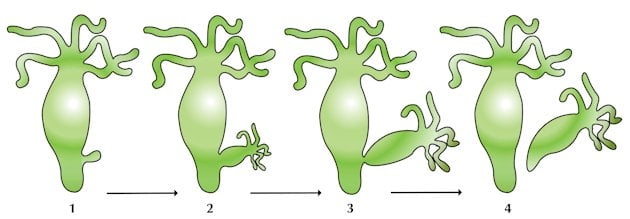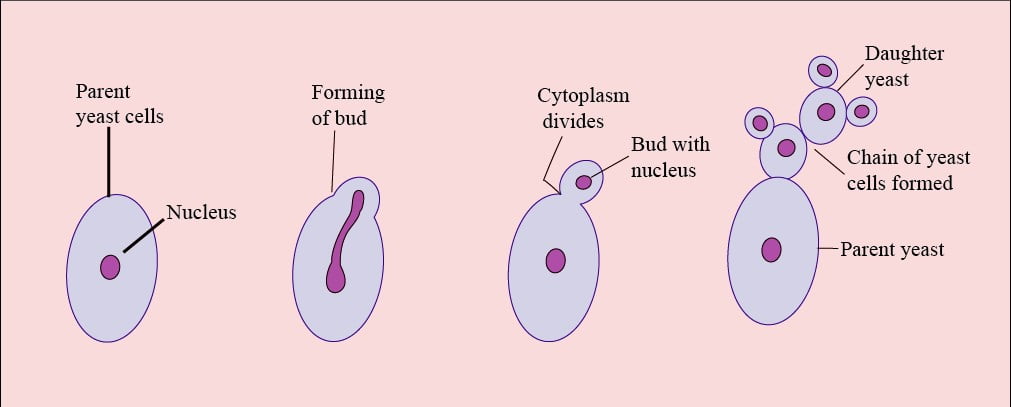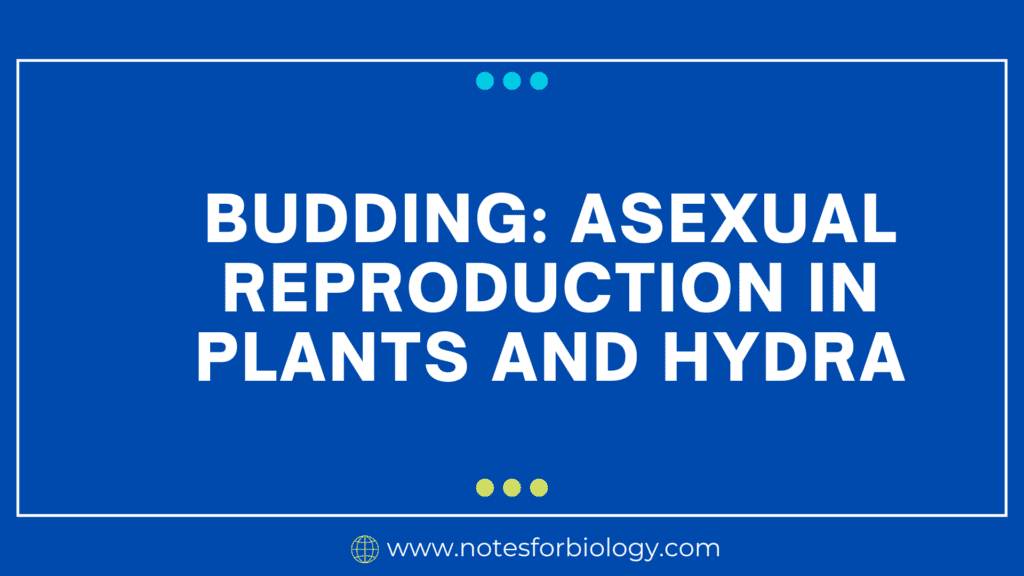Budding is a remarkable type of asexual reproduction found in a variety of creatures, including certain plants and hydra. It enables these organisms to reproduce without the requirement for fertilization, producing offspring that are genetically identical to their parent. This technique of reproduction is efficient and has various distinguishing features and ramifications for the survival and proliferation of these species.
Table of Contents
Budding in Hydra
Mechanism
Hydra, a genus of tiny freshwater invertebrates, display a rare type of budding that demonstrates the simplicity and effectiveness of asexual reproduction in animals. Hydra are known for their regenerative ability and uncomplicated body design, making budding a viable reproduction mechanism.
Bud Formation: Localized cell division produces a tiny bud on the parent hydra’s body. This often occurs in the hydra’s middle.
Development: As the bud expands, it progressively takes on the shape of a new hydra. During this stage, it grows tentacles and a mouth, like its parent in miniature.
Growth: The baby hydra continues to grow while remaining linked to its parent, gaining nutrition and support.
Detachment: Once the bud has fully formed and can survive on its own, it separates from the parent hydra and becomes a new organism.

Advantages
Rapid Population Growth: Budding allows hydra to rapidly expand their population, which is advantageous in situations with sufficient nutrients.
Independence from Mates: Hydra do not require a mate to reproduce, allowing them to proliferate even in isolated environments.
Maintenance of Successful Traits: Because the kids are clones, successful traits that enable the parent survive in their environment are passed down unchanged.
Disadvantages
Genetic Homogeneity: A lack of genetic variation can be detrimental in changing contexts, making the population less adaptable to new challenges and environmental changes.
Disease Vulnerability: Hydra clonal groups, like plants, are more sensitive to disease. A disease that affects only one person has the ability to wipe out the entire community.
Limited Genetic Improvement: Without genetic recombination, there is no way to naturally select beneficial features that may evolve as a result of genetic variety.
Budding in Plants
Mechanism
It is less common in the plant kingdom than other kinds of asexual reproduction, such as vegetative propagation, yet it nonetheless plays an important role in some species. Budding in plants often involves the following steps:
Initiation: A bud, a small outgrowth, forms on the parent plant. This outgrowth typically arises from regions known as meristems, which are areas of active cell division.
Growth: The bud develops and absorbs nutrients from the parent plant, resulting in a miniature, immature version of the parent.
Maturation: As time passes, the bud grows and matures, eventually growing into a fully formed, genetically identical individual.
Separation: Depending on the plant type, the mature bud may remain linked to the parent plant or detach and form an independent organism.

Some common examples :
Bryophyllum: sometimes known as the “miracle plant” or “life plant,” generates buds on the edges of its leaves. These buds mature into small plantlets that can fall off and take root in the earth, sprouting into new plants.
Fungi and Yeasts: In fungi like yeast, budding is a prevalent method of reproduction. A small bud forms on the parent cell, grows, and eventually detaches to become a new, independent cell.
Advantages
Rapid Reproduction: Budding allows plants to reproduce quickly and efficiently, which is especially useful in stable situations with ideal growing circumstances.
Resource Efficiency: Because there are no seeds, flowers, or fruits to produce, this approach needs less energy and resources than sexual reproduction does.
No Need for Pollinators: Because budding does not require pollination, plants can reproduce without the help of external agents such as insects, wind, or animals.
Disadvantages
Lack of Genetic Diversity: The offspring produced by budding are clones of their parent plant. This genetic consistency might be detrimental in dynamic contexts where adaptation is essential.
Susceptibility to Disease: Clonal populations are more vulnerable to illnesses and pests. If a sickness affects one person, it can swiftly spread to others due to their similar genetic composition.
Limited Dispersal: Because new individuals frequently develop close to the parent plant, there may be competition for resources including light, water, and nutrients.
To conclude, Budding is an efficient mode of asexual reproduction that enables certain plants and hydra to reproduce quickly and effectively. While it has many advantages, especially in stable situations, a lack of genetic variety can be a major disadvantage in changing conditions. This mode of reproduction demonstrates the various ways that organisms use to live and propagate.
Frequently Asked questions (FAQ)
What is budding regarding the concept of asexual reproduction?
Budding is a form of asexual reproduction where a new organism develops from an outgrowth or bud on the parent organism.
In what circumstances does Hydra usually reproduce through budding?
When the environment is favorable – that is, when there is a quantity of food and a comfortable temperature, hydra usually reproduce by budding. Hydra might switch to sexual reproduction or slow down budding under unfavorable environments.
How do plants undergo budding?
In plants, budding involves the formation of a small outgrowth, or bud, usually from meristematic tissue. This bud grows and develops into a new plant, which may eventually detach from the parent plant.
Related Articles

